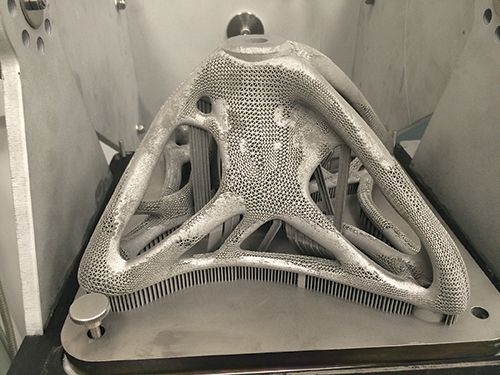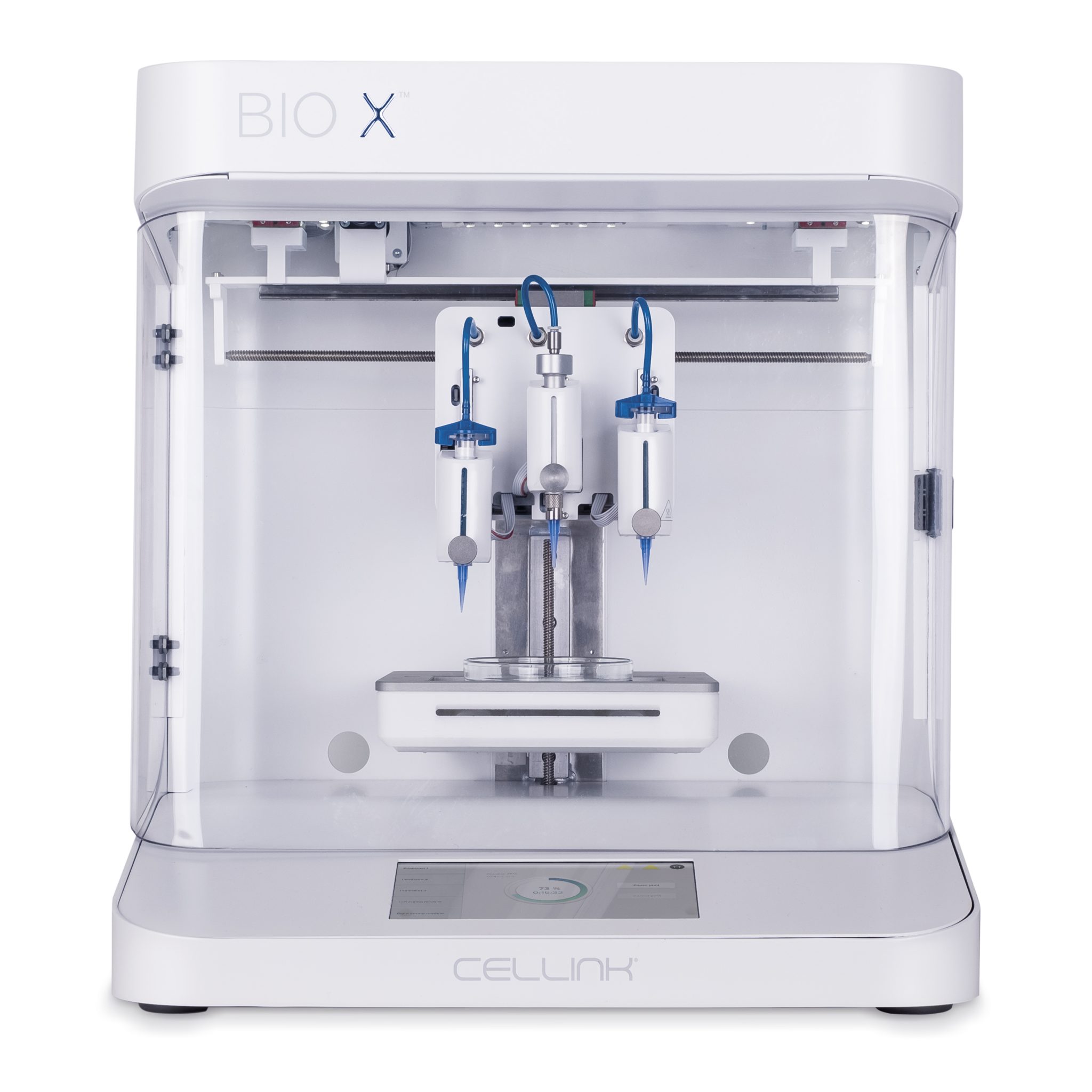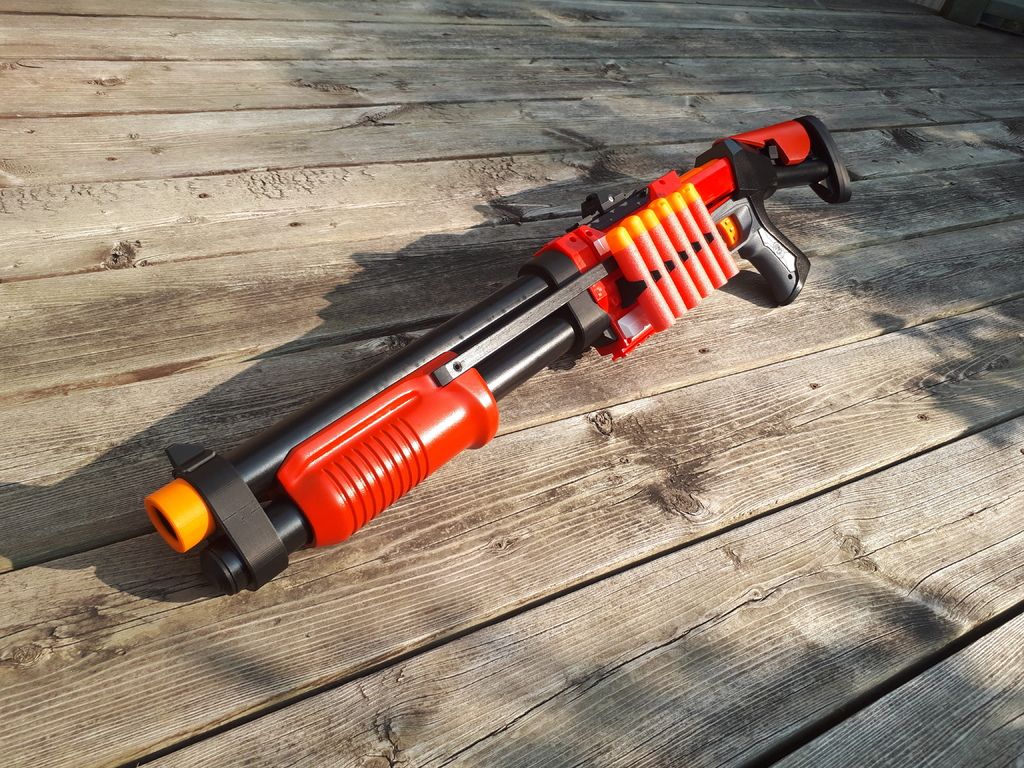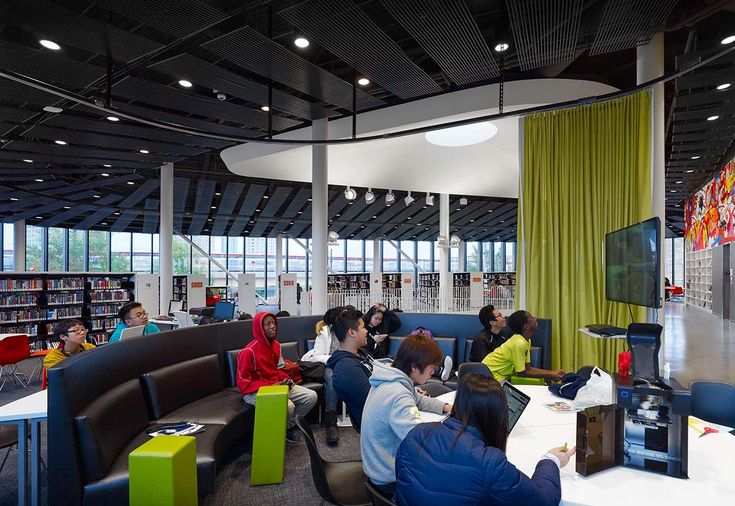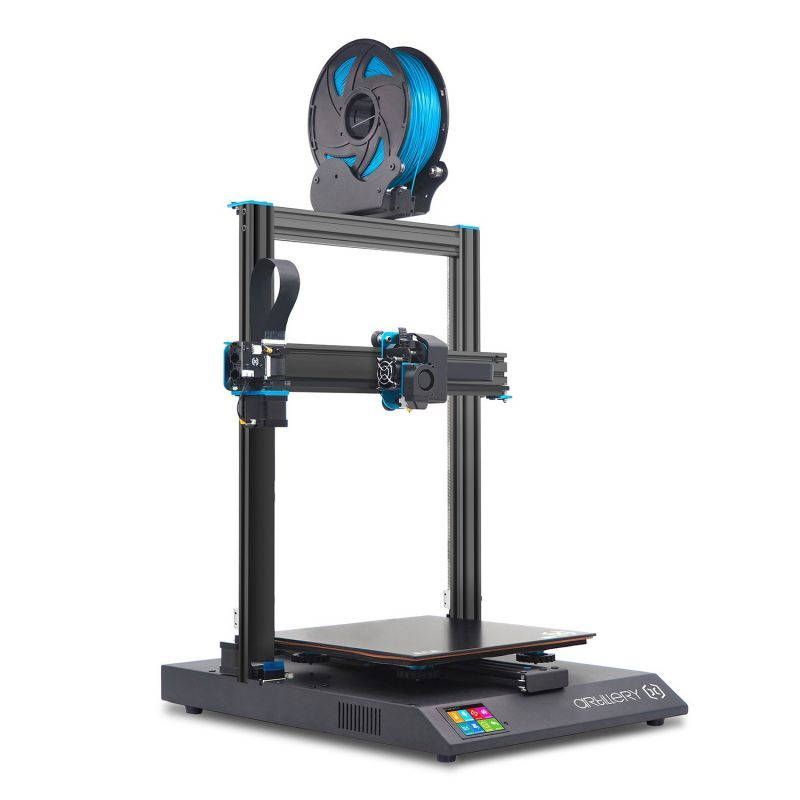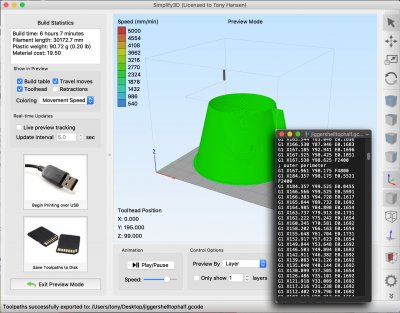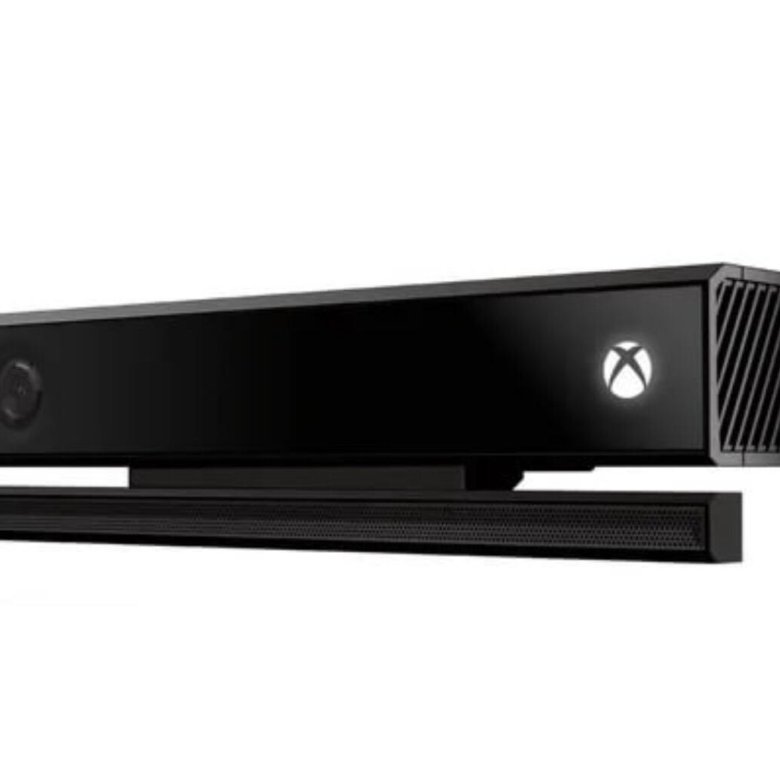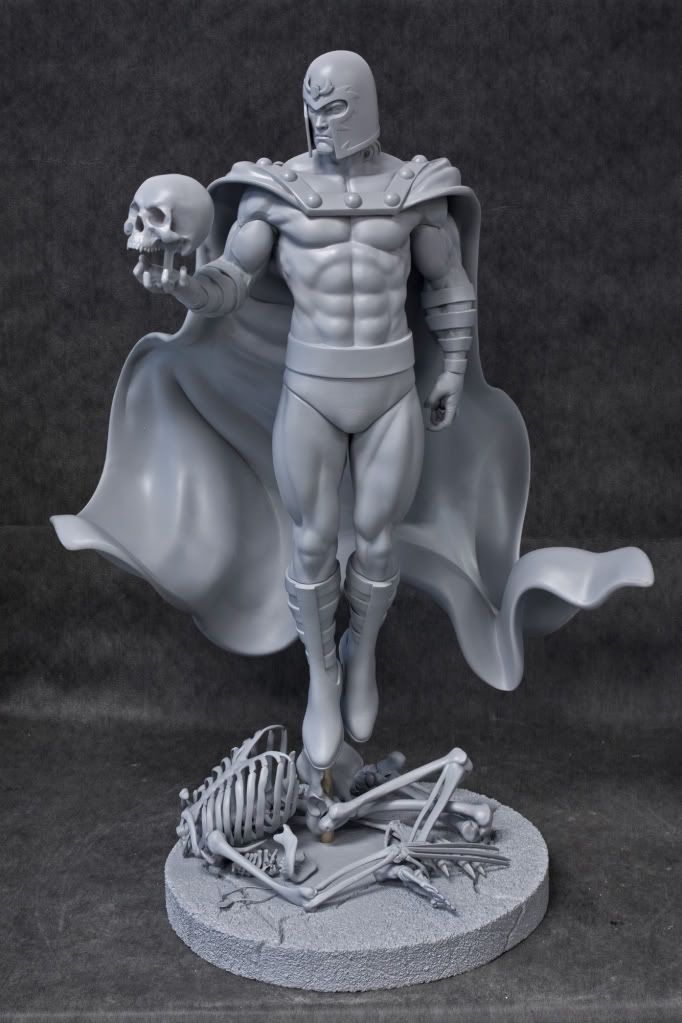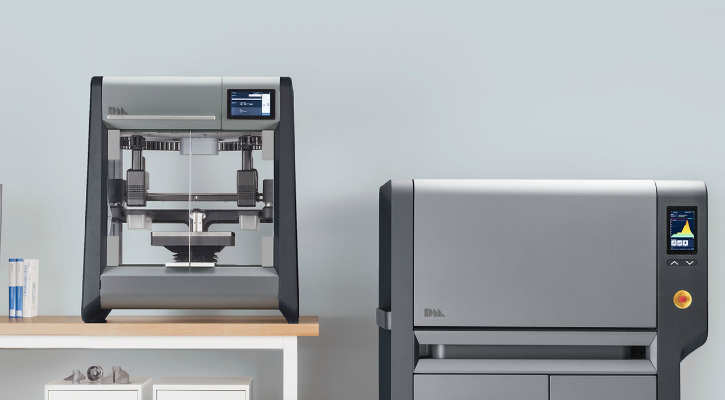Complex 3d printed parts
Complex geometries are possible with 3D printing
Industrial 3D printing means that the manufacturing process no longer determines the complexity of a component, but rather the product’s desired functionality and design. Complex geometries, such as three-dimensional structures with undercuts or cavities, are typically impossible to manufacture with conventional technologies like milling, turning or casting, or are only possible at disproportionately high costs.
Now, any shape that can be constructed in a 3D CAD program can be produced with additive manufacturing technology. There are almost no restrictions – even when manufacturing hollow structures. This works because the material is only added where it needs to go. Additive manufacturing gives developers maximum geometric design freedom, and complexity only plays a minor role in the production costs. The costs can often even be significantly reduced due to lower material consumption.
EOS technology was a logical choice for us because we manufacture small series productions with complex shapes. We acquired the high-temperature system EOS P 800 at an early stage and were able to rapidly make progress in the development cycle of OsteoFab™ technology. EOS accompanied us throughout the entire process.
Scott DeFelice | President and CEO | OPM
Multiple structures in the same part
Thanks to 3D printing, the hip cup implant was significantly optimized. The artificial hip cup consists of solid sections that provide stability and porous elements on the surface. The differently sized pores help to anchor the implant firmly: Large pores are helpful for pressure transmission - smaller pores support the initial fixation. In this way, the complex surface structure simplifies osseointegration, or the growth between the living bone tissue and the surface of the implant.
Flexible structural adjustment possible
The full implant is manufactured in a single production step by the 3D printer and would be extremely difficult to make with conventional manufacturing methods.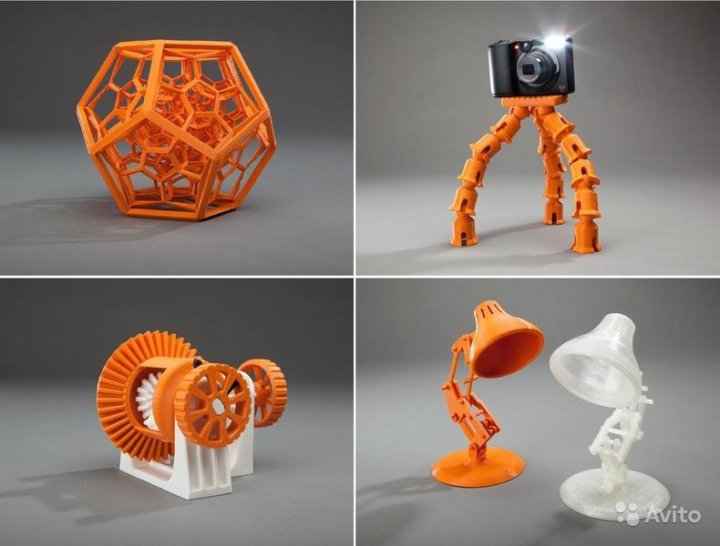 At the same time, the high flexibility of additive manufacturing enables the structure, surface roughness and pore size to be determined individually for each patient. Together with the Additive Minds Team at EOS and the established 3D metal printing system EOS M 290, Permedica succeeded in realizing a completely new product.
At the same time, the high flexibility of additive manufacturing enables the structure, surface roughness and pore size to be determined individually for each patient. Together with the Additive Minds Team at EOS and the established 3D metal printing system EOS M 290, Permedica succeeded in realizing a completely new product.
Evolutionary processes have created biological structures in great abundance and diversity: today, we know of more than 1 million species of animals and around 500,000 species of plants. These systems often have shapes and structures that are optimally adapted to their environment and are created with minimal use of materials and energy. The interdisciplinary research field of bionics aims to exploit this massive potential by adapting natural blueprints to technical applications.
This is where conventional manufacturing processes encounter their limits. By contrast, additive manufacturing achieves maximum design freedom. With our technology, you have the opportunity to build, discard, re-engineer and continuously optimize your prototypes during development. The tool-free production saves time and money - while offering enormous opportunities. As a result, there have been disruptive innovations in medicine, ergonomics and aviation, for example, especially in connection with aerodynamics.
The tool-free production saves time and money - while offering enormous opportunities. As a result, there have been disruptive innovations in medicine, ergonomics and aviation, for example, especially in connection with aerodynamics.
Success Story Festo
Bionic Gripper
The additively manufactured Festo gripper DHDG is a bionic gripping device that can grip objects gently and flexibly but powerfully, and set them down safely. Its shape and function were inspired by nature. With the FORMIGA P 100 by EOS, the automation specialists Festo were able to produce the parts they needed quickly and cost-efficiently in small series production.
The results are impressive.
Thanks to the superior design freedom, the production can be flexibly guided by the design. By integration functionality into the part during production, Festo succeeded in significantly reducing the number of individual parts and the assembly cost. The resulting gripper is lightweight and durable.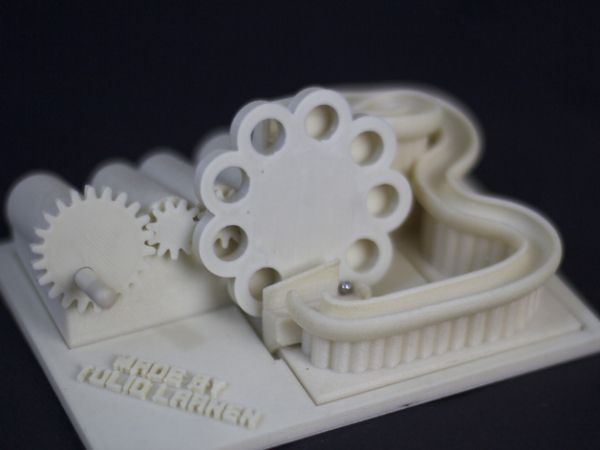 And even the price is right: Festo saved time and money with tool-free production.
And even the price is right: Festo saved time and money with tool-free production.
Thinking in new ways is worth it: you can’t drill around corners, but you can easily print holes. The geometric freedom of design granted by industrial 3D printing opens new possibilities for designers. This requires know-how and a new approach to design.
We're here to help you take full advantage of additive manufacturing.
There are many upsides to 3D printing. EOS technology allows highly complex parts featuring functional integration and maximum product customization to be developed and manufactured quickly.
7 Complex Designs Achieved With 3D Printing
24 July 2019
By taking advantage of the design flexibility afforded by 3D printing, engineers can bring even the most challenging ideas to life.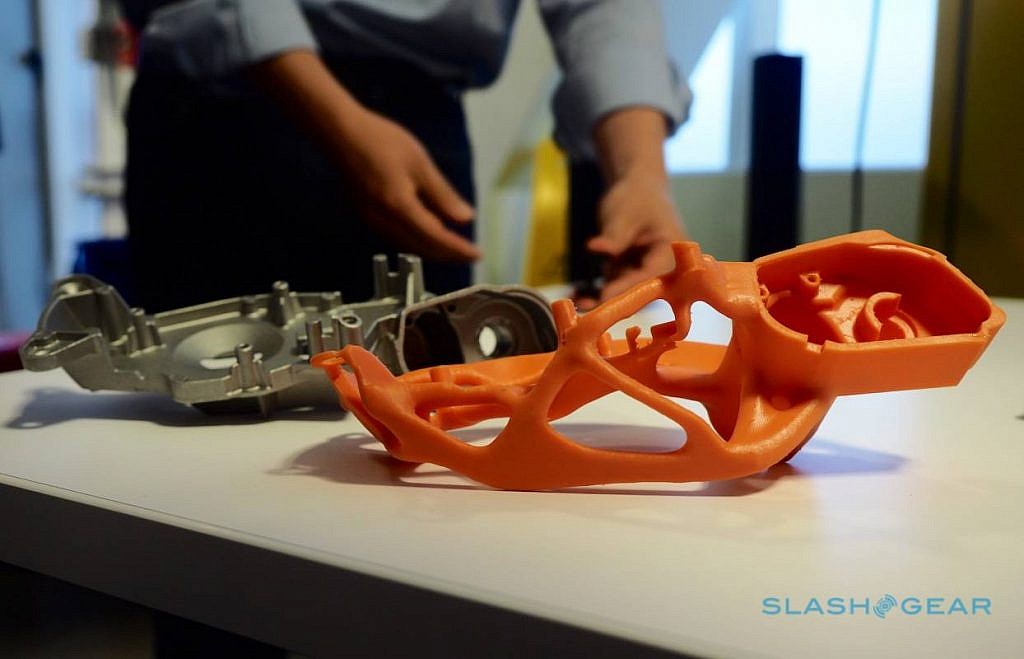
3D printing is a technology that can produce shapes and features unachievable with conventional manufacturing methods. To showcase the power of the technology, we explore 7 examples of impressive designs that were achieved only with 3D printing.
Application: Automotive
Benefits: Lightweighting, greater strength
French automaker, Bugatti, leveraged the design freedom of 3D printing for its latest Chiron supercar, producing what is said to be the world’s most powerful brake caliper — 3D printed in titanium.
While the brake caliper functions just like a normal caliper, the combination of 3D printing and titanium means that it is much stronger and roughly 40% lighter than the aluminium part currently in use.
Using a metal 3D printing process called Selective Laser Melting, the Bugatti team was able to experiment with a variety of geometries and wall thicknesses unattainable with traditional manufacturing techniques.
The result: an intricately-shaped brake caliper with wall thicknesses between 1 mm and 4 mm.
The end of 2018 saw Bugatti successfully testing the caliper at high loads, and the company is now preparing to take the component into production.
However, Bugatti is not the only company revolutionising the design of brake calipers. British automotive technology company, Carbon Performance, is also using 3D printing to ‘generate sustainable designs’ for 3D-printed automotive parts, including calipers.
To achieve this, Carbon Performance is using its new, AI-powered software platform. The platform helps to design components that can, for example, improve the fuel efficiency of a car.
Using its design software and 3D printing, Carbon Performance is able to produce brake calipers that are more robust and environmentally friendly thanks, in part, to their lighter weight. Being able to create lightweight metal parts with 3D printing means less material is required and the production process incurs less material waste than with subtractive manufacturing.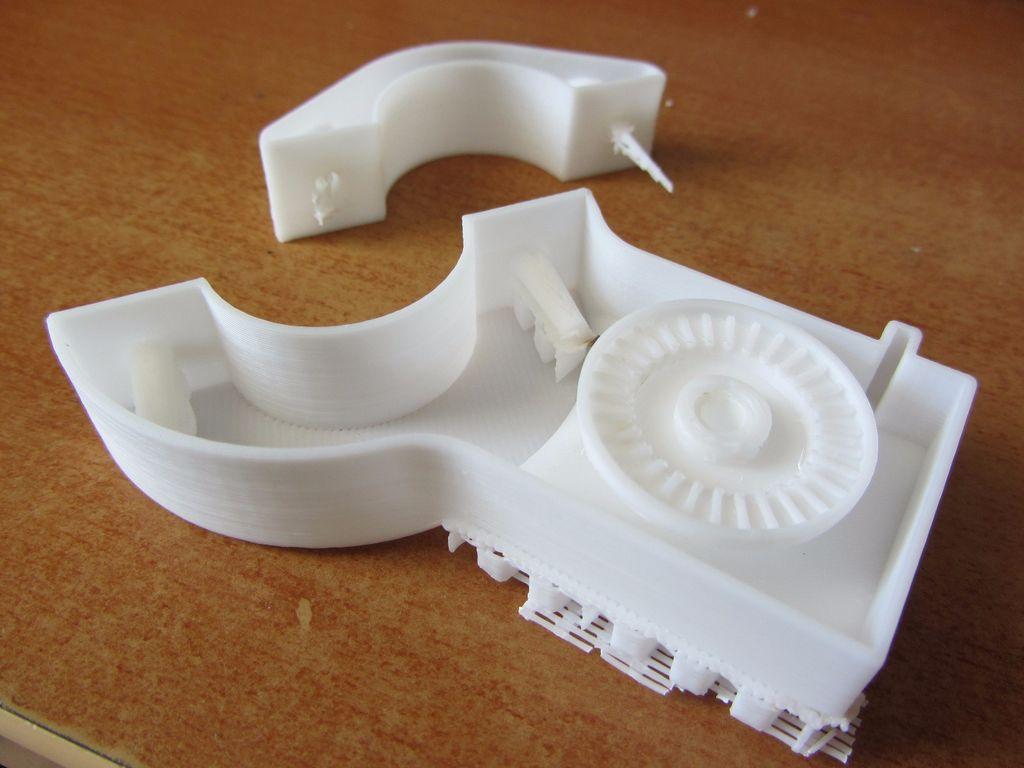
Creating lightweight designs is one of the key benefits of 3D printing. As the trend towards electric and more efficient vehicles continues to grow, we’ll see more automakers exploring 3D printing in their efforts to create better-performing, lightweight car components.
Application: Automotive
Benefit: Significant weight savings
General Motors (GM) has recently created a 3D-printed version of an existing seat bracket using generative design tools.
Generative design software uses advanced algorithms to automatically generate multiple design variants based on specific parameters such as weight, material, size, strength and manufacturing methods. The subsequent designs feature complex, organic shapes which often can only be brought to life with the help of 3D printing.
This was exactly the case with GM’s seat bracket. Using Autodesk’s Fusion 360 generative design software, 150 design iterations were produced. GM then selected the design that offered the best trade-off between weight, performance and manufacturability.
Using Autodesk’s Fusion 360 generative design software, 150 design iterations were produced. GM then selected the design that offered the best trade-off between weight, performance and manufacturability.
The final design barely resembles the original bracket. 3D printed in metal, the new seat bracket is 40% lighter and 20% stronger than the original. It has also been manufactured as a one component, unlike the original part which has to be assembled from 8 separate parts.
The ability of 3D printing to create complex parts more quickly and with more flexibility makes the technology a natural choice for producing the redesigned component. The benefit shown in this example is part consolidation — the ability to print multiple parts as a one component, and thereby reduce assembly times and costs.
Although GM’s seat bracket remains a proof-of-concept, the company sees huge potential in combining 3D printing and generative design software. Both technologies will certainly a key role in the future of vehicle manufacturing by facilitating faster design and product development, as well as the production of complex automotive parts.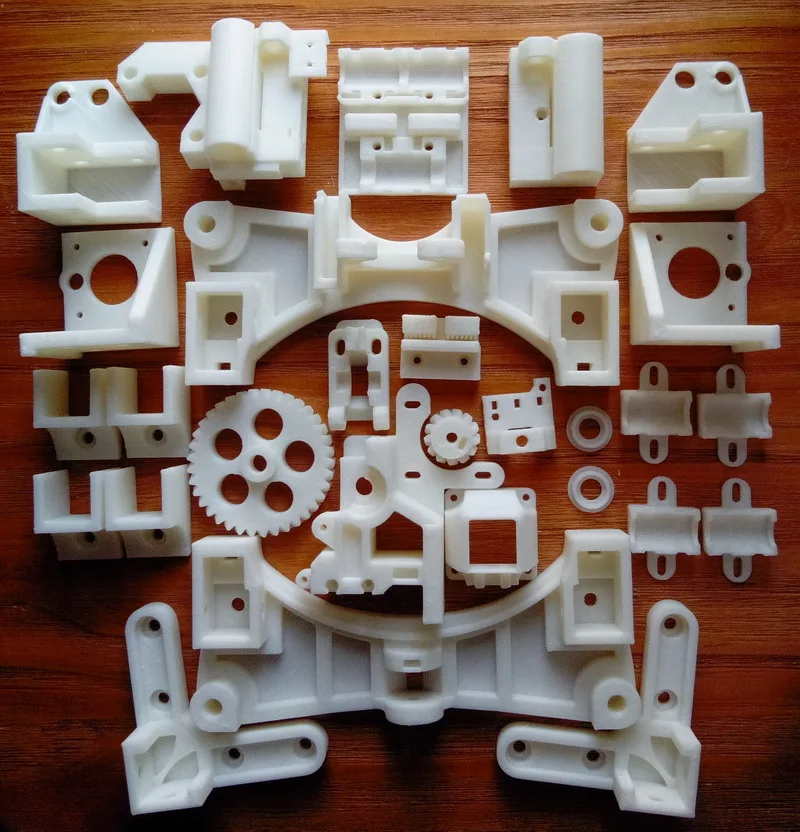
Application: Medical
Benefit: Material optimisation
Topology optimisation is a generative design technique that enables designers to apply advanced algorithms to optimise the geometry of a part. Using the technology, the material distribution of a part can be optimised to remove any unnecessary material from the design.
One company leveraging topology optimisation is IT company, Altair, which combined 3D printing with topology optimisation to create an improved hip stem implant.
3D printing offers a range of benefits for hip implants, including the ability to customise an implant for the specific loads it is required to bear. Topology optimisation software facilitates this by allowing engineers to factor in the various load cases a hip implant might see during its life cycle.
By inputting parameters such as load cases and design constraints, the software optimises the material distribution within a defined material volume.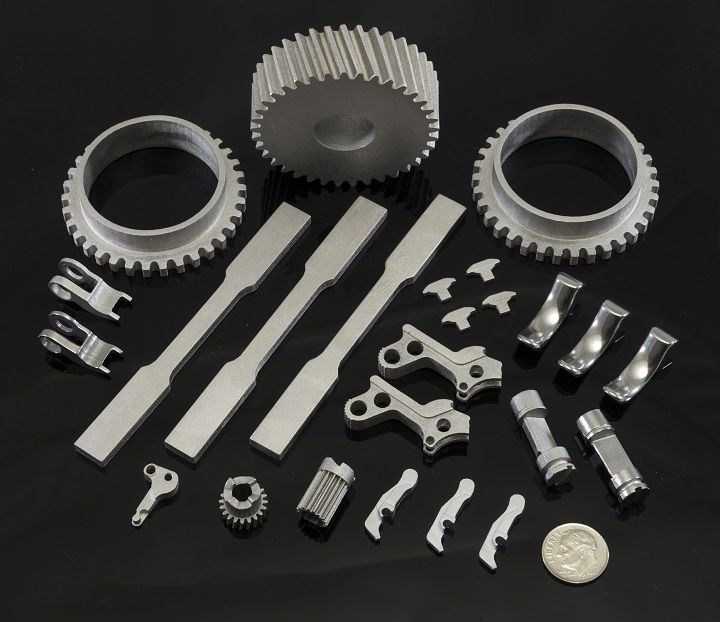 This process results in a design showing where material can be removed to create the best-performing hip implant.
This process results in a design showing where material can be removed to create the best-performing hip implant.
The Altair team used this approach to determine the solid and semi-dense areas of the implant before filling the semi-dense regions with lattice structures to make the implant lighter.
Compared to an intact femur or a femur with an off-the-shelf implant, the team found that the new design helps increase an endurance limit to about 10 million cycles. This means that the hip implant could endure jogging from Los Angeles to New York and back — twice.
The new design also helps to reduce stress shielding by 57%. Stress shielding refers to the reduction in bone density caused by placing a titanium implant inside a patient, and can ultimately lead to fractures and dislocation. For this reason, designing an implant as close to the original bone tissue as possible is key to reducing stress shielding and eliminating these unwanted effects.
Using 3D printing as a manufacturing technology is the only way to bring such designs to life.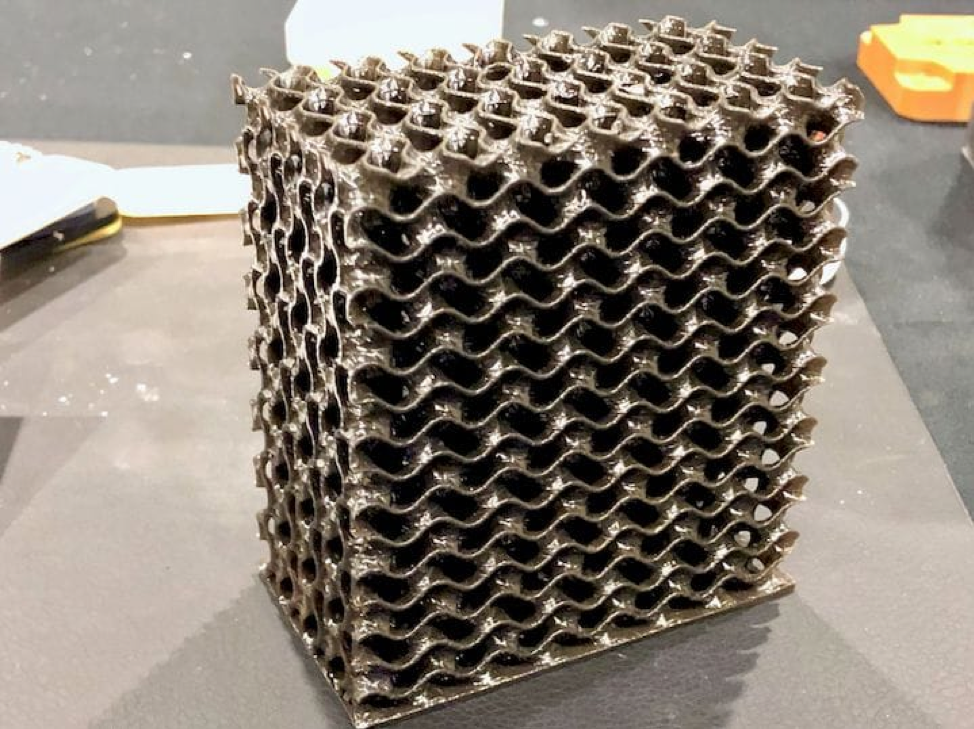 Not only does it make complex shapes like lattices possible, but it also can produce them more cost-effectively than conventional methods.
Not only does it make complex shapes like lattices possible, but it also can produce them more cost-effectively than conventional methods.
As of today, topologically-optimised 3D-printed implants are only starting to make their way into real-life use cases. It will take some time for healthcare regulators to develop new standardisation methods for these new implant designs. However, looking in the future, it’s clear that 3D printing will become a key technology for creating better-fitting, longer-lasting and higher-performing hip implants for a specific patient.
Application: Construction
Benefit: Innovative design
Unveiled at Dutch Design Week in 2018, MX3D’s stainless steel 3D-printed pedestrian bridge is one of the most exciting design projects in the 3D printing space.
By fitting welding machines onto robotic arms, the MX3D team was able to 3D print a bridge 12 metres long, achieving a unique look and shape.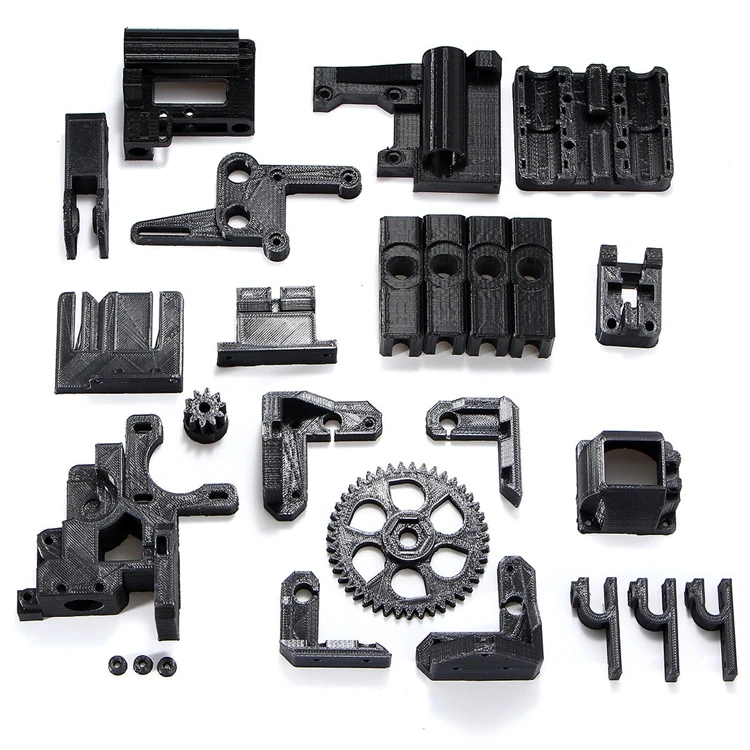 For instance, the design of the bridge is organic and fabric-like, with lots of curves and intricate features. The surface of the bridge has been left unsmoothed, leaving the layers of deposited steel visible that give the bridge a rough, unusual finish.
For instance, the design of the bridge is organic and fabric-like, with lots of curves and intricate features. The surface of the bridge has been left unsmoothed, leaving the layers of deposited steel visible that give the bridge a rough, unusual finish.
Interestingly, 3D printing wasn’t the only cutting-edge technology used for this project. To ensure both the safety and optimised performance of the bridge, the 3D-printed steel structure is equipped with a network of sensors to monitor the state of the bridge, recording the number of people walking across it and taking measurements of things like weight dispersion and air quality.
The whole project took nearly four years to execute and now the completed bridge is set to be installed in Amsterdam later this year.
Application: Energy
Benefit: Enhanced performance
GE Research is developing an ultra-efficient, low-emission heat exchanger for power generation equipment like gas turbines.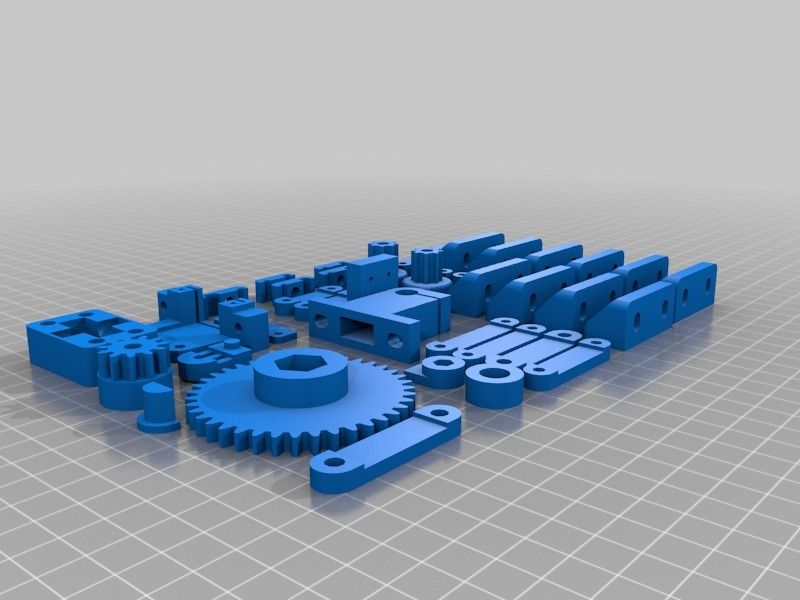 Surprisingly, to achieve this, the team came up with an innovative design inspired by human lungs.
Surprisingly, to achieve this, the team came up with an innovative design inspired by human lungs.
Human lungs are one of the most efficient and compact heat exchangers. The organ performs its heat-exchange function with a network of capillaries, which split the flow of blood into small streams. This network warms up the cooler air that we inhale, while also regulating the body’s temperature.
GE’s heat exchanger works in a similar way, but at much higher temperatures and pressures. The component features a trifurcating network of channels, which takes hot air coming out of a gas turbine. This network is intertwined with another network of channels filled with colder working fluid running in the opposite direction. The hot air and cool fluid do not mix with each other, but their close proximity allows the hot air to be cooled down, improving the thermal efficiency of a gas turbine.
Crucially, 3D printing was the only technology capable of producing such a complex design.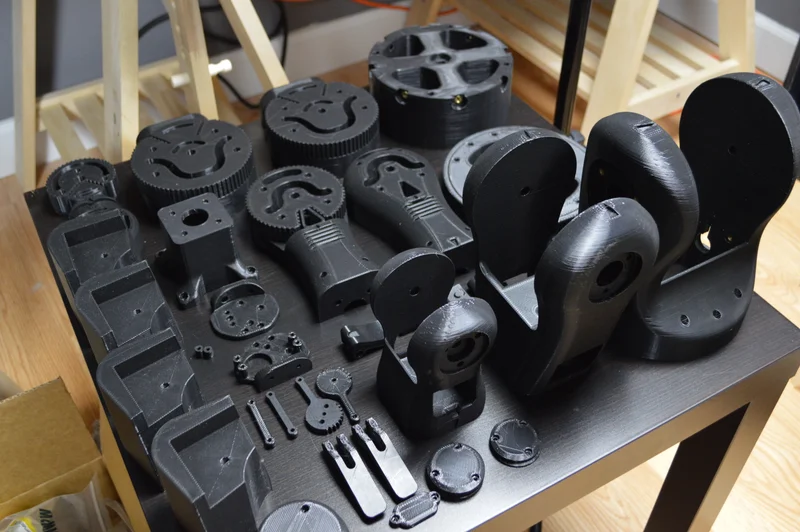
Once the development process is complete, GE will be able to 3D print a heat exchanger that can operate cost-effectively at 250°C (450°F) degrees higher than today’s heat exchangers. With a significantly increased operating temperature, the 3D-printed component represents a new generation of high-performance heat exchangers.
Application: Automotive
Benefit: Weight savings
In 2018, BMW released its iconic i8 Roadster car, featuring an award-winning 3D-printed metal roof bracket.
The roof bracket, a small component that helps to fold and unfold the top of the car, required a new design to maximise the performance of the roof-folding mechanism. To achieve this goal, engineers at BMW turned to topology optimisation software.
By using this software, engineers were able to input parameters like the weight, the size of the component and the load it will take.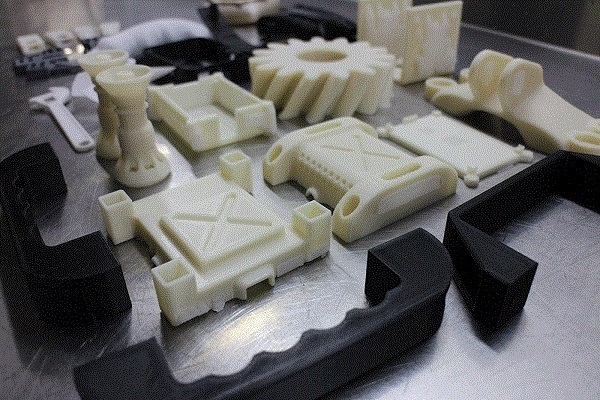 The software then generated a design that optimised the material distribution of the part.
The software then generated a design that optimised the material distribution of the part.
The design achieved by the engineering team was impossible to cast. The team found that the only way to make this design possible was through metal 3D printing.
Thanks to Selective Laser Melting (SLM) technology, engineers created a metal roof bracket that is 10 times stiffer and 44% lighter than the conventional alternative.
The part, which is now produced in small series, showcases a huge lightweight potential for vehicle designs when combined with the power of topology optimisation techniques.
Application: Energy
Benefit: Complex internal features
For a few years, engineering company, KW Micro Power, has been working on a design of a microturbine generator but faced challenges with taking this design to production. A key challenge lay in the production of one of the device’s components.
A key challenge lay in the production of one of the device’s components.
The component in question is a titanium disc featuring complex internal channels that help to manage exhaust gases more efficiently. When 3D-printed in metal, this component requires support structures to prevent drooping or warping during the printing process.
However, the complexity of internal features of the component made it impossible to remove the supports following production.
To overcome this challenge, the company collaborated with VELO3D, a 3D printer manufacturer that has developed its proprietary metal 3D printing technology, Intelligent Fusion. This technology enables VELO3D’s Sapphire 3D printer to print parts with minimal support structures and reduced residual stresses, which are often the cause of warping.
This is achieved due to a patented non-contact recoater, which is used to deliver a fresh layer of powder to be melted and fused with a laser. In powder-based metal 3D printing, when powder is laid on top of another layer, a recoater could dislodge the part if it’s not fixed to a build plate.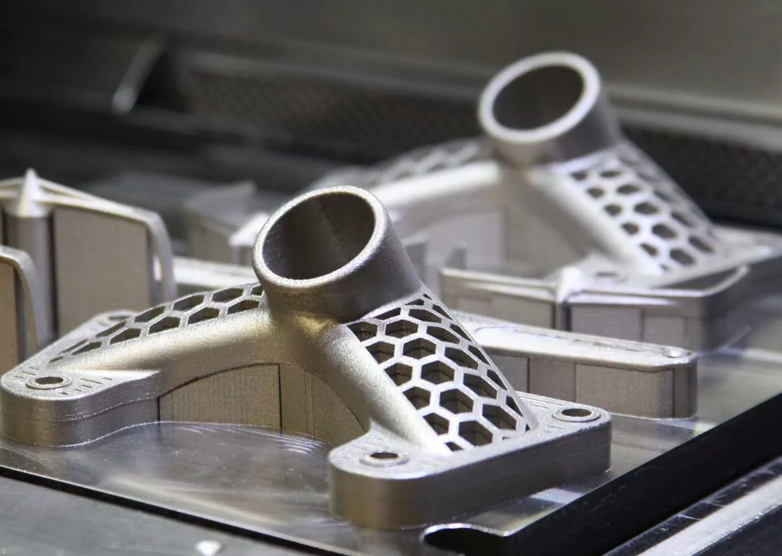
In VELO3D’s Sapphire System, the re-coating blade is not in contact with the powder bed. Once the powder is deposited, a scraper blade and vacuum process are applied to the top of the powder to make sure that it is absolutely level.
With a recoater not contacting the previous layer of powder, a part doesn’t need any support anchor it to a metal build plate. In the meantime, simulation and a closed-loop control system powering the printer enable complex internal features to be printed without supports.
To leverage the full power of the Sapphire 3D printer, VELO3D’s team helped KW Micro Power to further improve the design of the generator component. The finished part is 37% lighter than the original design and is said to perform better thanks to reduced stresses. But more importantly, the design which was previously deemed non manufacturable, was made possible thanks to a new generation of metal 3D printing technologies.
3D printing offers tremendous design flexibility, enabling designers and engineers to experiment with new forms and features, including topologically-optimised shapes, lattice structures and lightweight designs.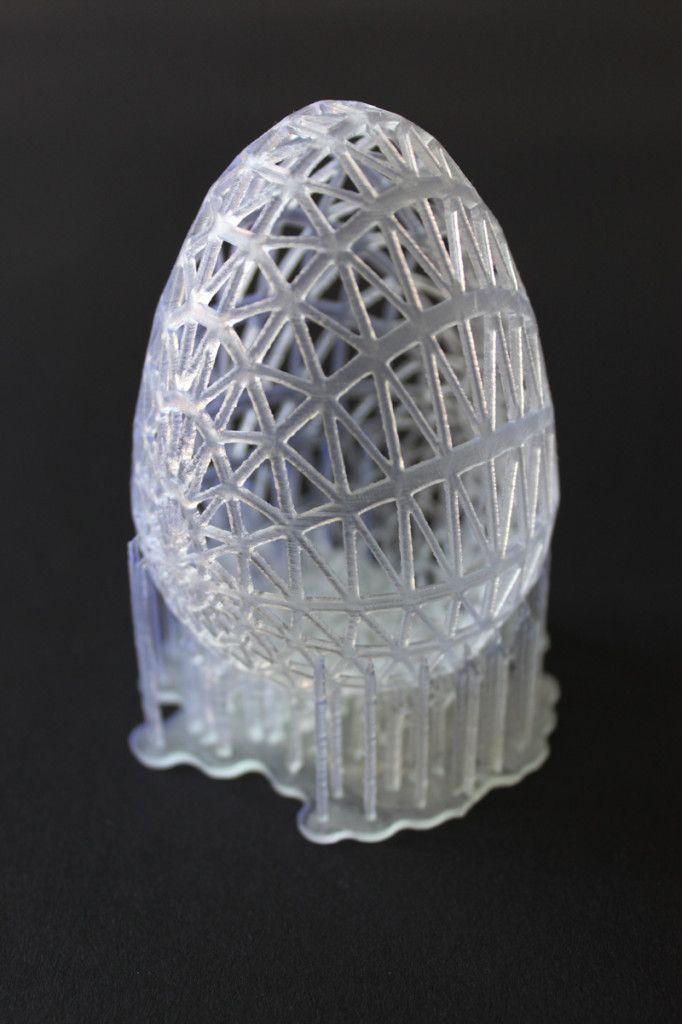
With so many opportunities unlocked by 3D printing, the technology allows manufacturers to produce innovative products with optimised an customised designs, which would be impossible with traditional manufacturing.
However, to unlock this potential it’s crucial to follow design principles unique to additive manufacturing. Only when armed with understanding about both possibilities and limitations of 3D printing, can companies use the technology to fulfill their most creative ideas.
3D printing of complex products - refutation of the myths about 3D printing
3D printing of complex products
In this period, 3D printing technology is flourishing and gradually takes a stable position in the Ukrainian market. Right now, people are beginning to fully realize the fullness of the possibilities of 3D technologies and resort to them if necessary. However, many continue to perceive additive manufacturing as something exotic, as an unusual method of making souvenirs and decorative items. But 3D printing of complex products is not a myth at all. The purpose of our today's article will be to refute this myth and demonstrate the potential of 3D technologies in the production of complex functional elements.
But 3D printing of complex products is not a myth at all. The purpose of our today's article will be to refute this myth and demonstrate the potential of 3D technologies in the production of complex functional elements.
We have repeatedly covered in our articles the advantages of three-dimensional techniques for a variety of purposes, including 3D printing of complex products. The only requirement is the availability of a high-quality 3D model of the required sample. If it is not available, modeling can be performed on the basis of the original product, after which the element will be ready for 3D printing. You just need to choose the optimal material to reproduce the product, and then it will be printed on a 3D printer. It would seem, what could be easier? But, despite the simplicity of the process, if it is necessary to manufacture functional elements and any complex structures, something stops people from turning to 3D technologies. Do not be afraid, 3D printing of complex products is quite real.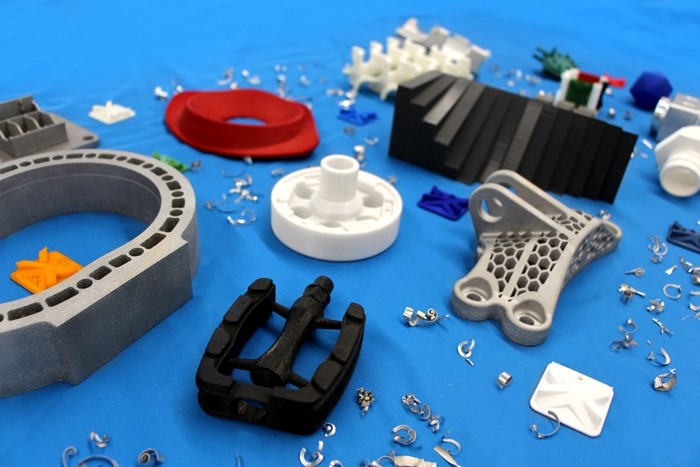
Complex parts on a 3D printer
So why are people afraid to 3D print complex products? The reason may lie in distrust of the technique itself, uncertainty in its capabilities, or the banal unwillingness of people to interact with something unfamiliar. We, as a company with vast experience in the field of 3D printing, can assure you that anything can be made with a 3D printer. Moreover, it will not be difficult to make complex parts on a 3D printer. At the current level of development of the methodology, there are practically no restrictions in it. Moreover, various types of printers and printing technologies allow you to choose the most effective way to reproduce the necessary objects in all respects. As an example, we would like to cite a few of our own works. 3D printing of complex products with us is a guarantee of a quality result.
We mainly do 3D printed gears made from original designs. The main difficulty in their manufacture is the exact correspondence to the standard thread.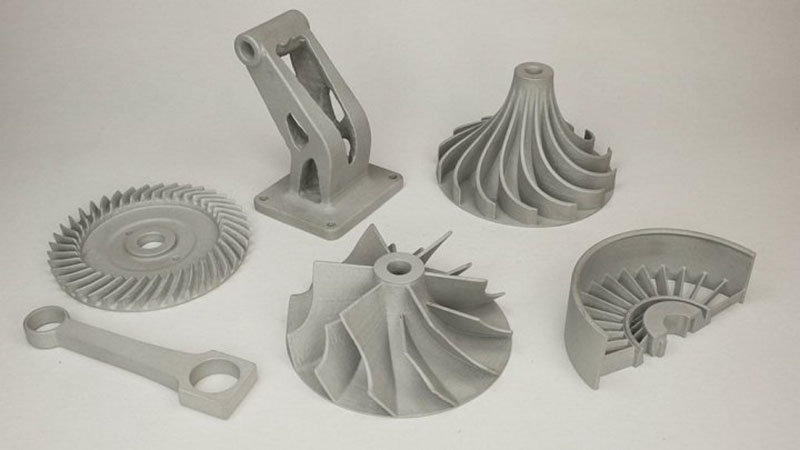 If this fact is not observed, the operation of the entire mechanism may be in jeopardy. With a firm adherence to all production features, 3D printing technology does an excellent job, which makes it ideal for the manufacture of complex functional elements. An even wider range of possibilities opens up an abundance of materials for printing on a 3D printer, including reinforced polymers. 3D printing of complex products can be performed on almost any device using the required parameters set together with the customer.
If this fact is not observed, the operation of the entire mechanism may be in jeopardy. With a firm adherence to all production features, 3D printing technology does an excellent job, which makes it ideal for the manufacture of complex functional elements. An even wider range of possibilities opens up an abundance of materials for printing on a 3D printer, including reinforced polymers. 3D printing of complex products can be performed on almost any device using the required parameters set together with the customer.
Order 3D printing of complex products
It is worth noting that 3D printed elements demonstrate excellent performance in work, not inferior in properties to original parts. And, of course, the most important advantage of manufacturing products using 3D printing is the financial side of the issue. The production of functional elements by standard methods often costs a lot of money. Additive technologies allow you to save a lot without losing the quality of the original product.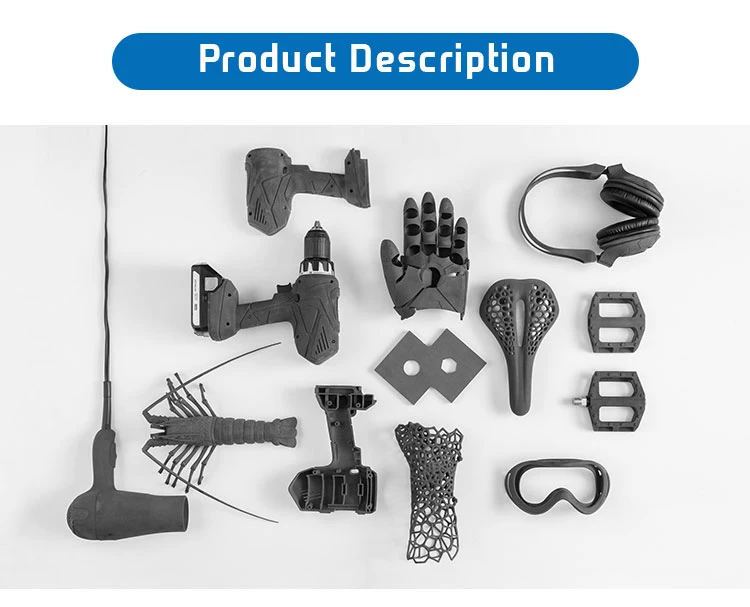 All of the above makes three-dimensional techniques an optimal working tool for the manufacture of parts for various purposes.
All of the above makes three-dimensional techniques an optimal working tool for the manufacture of parts for various purposes.
Finally, we want to add that ordering 3D printing of complex products from 3DDevice is as easy as shelling pears. It is enough to contact us by phone or e-mail, indicated in the "Our contacts" section. We also perform 3D modeling of objects of any complexity and provide 3D scanning services. And in our store you will find a lot of various equipment for 3D printing. If you have any questions or suggestions, please contact us and we will be happy to discuss them!
Back to main page
⚙️ Best Mechanical STL Files for 3D Printing・Cults
⚙️ Best Mechanical STL Files for 3D Printing
Download Mechanical Creations 3D Files
This collection contains more than just 3D -Prints, but real designs. Each design consists of several mechanical parts that fit together to form a functional whole. These gears will let you bring toys, machines or even watches to life!
SPRING BOX FOR FIELD PRINTING
Free
Mechanical quick release phone stand
Free
PRINT-IN-PLACE PHONE HOLDER - FOR SPACE?!
Free
Print-in-Situ - Roll Distance Tool
Free
TT Furious
Free
Predator Action Pliers
Free
Multicolored toy "Flying helicopter"
Free
Flying sea turtle
Free
Flying Helicopter Toy
Free
Triple Gear
Free
Cool Squeeze - fan grip
Free
Fidget Gears Revolving V2 (print on site!)
Free
Smartphone Stabilizer
Free
Clock one
Free
Predator Action Pliers Mk2
Free
Differential Gears
Free
Mechanical Planetarium
Free
Triple Axis Tourbillon
Free
Platform Jack with some modifications
Free
planetary gear
free
Save the Whales (Kinetic Whales)
Free
Gyro-motor factory / Clock factory
2.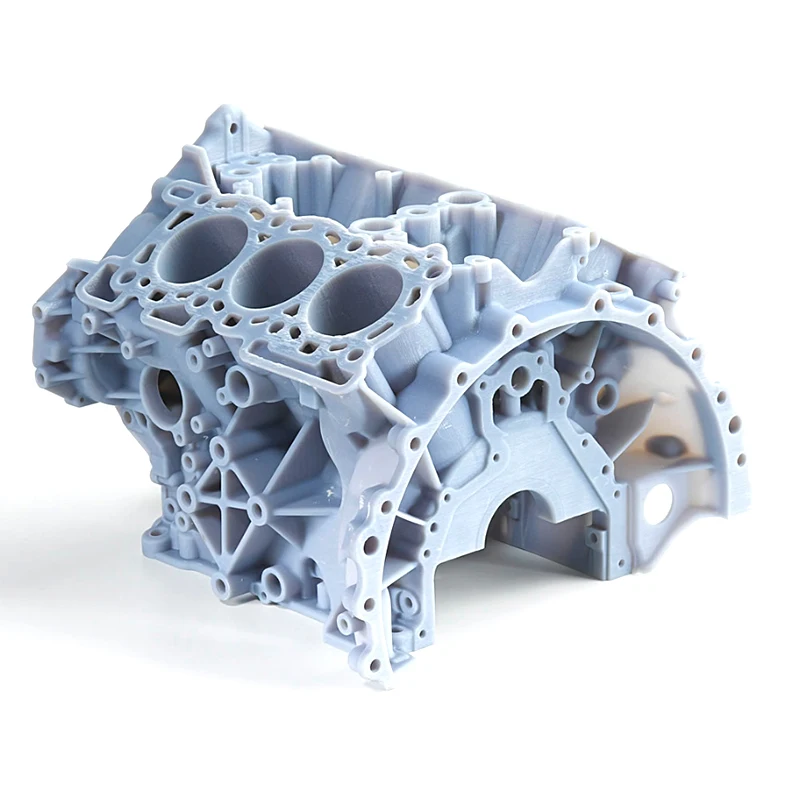 50 €
50 €
Keychain with fidget toy
0,99 €
Gyro tourbillon - Jaeger-LeCoutre model
Free
Turboprop Engine
Free
Gyrotourbillon
Free
Industrial Bevel Gearbox / Gear Reducer (Cutaway version)
Free
Elevated Print in Place Phone Holder!
Free
Bevel Gear Toy Set 17/51T or 3:1 Ratio
Free
775 motor gear
free
Christian Huygens 3D printed clock
Free
Eolienne Wind Turbine
5 €
Planetary Gear Module Part 1
Free
Mechanical Gripper May 2019
Free
Industrial Spur Gearbox / Gear Reducer (Cutaway version)
Free
Jet Engine
Free
The Humble Velocipede
Free
Deadbolt Combination Lock
Free
SAKURA Gear ring
Free
Hummingbird
Free
Shredder V8 Gears
Free
Jet Engine, 2-Spool, Current
Free
Gear Keychain
Free
Crazy Cogs - Gear Play Set
Free
A Motorized Shark
Free
Platform Jack [Fully Assembled, No Supports]
Free
Jet Engine, Geared Turbofan (GTF)
Free
Customizable Simple Pulley/Gear
Free
Flying sea turtle
Save the Whales (Kinetic Whales)
SPRING BOX FOR FIELD PRINTING
Mechanical quick release phone stand
Here is our selection of best mechanical STL files of , all these beautiful creations are taken from Library Cults 3D file library and easy 3D printable .